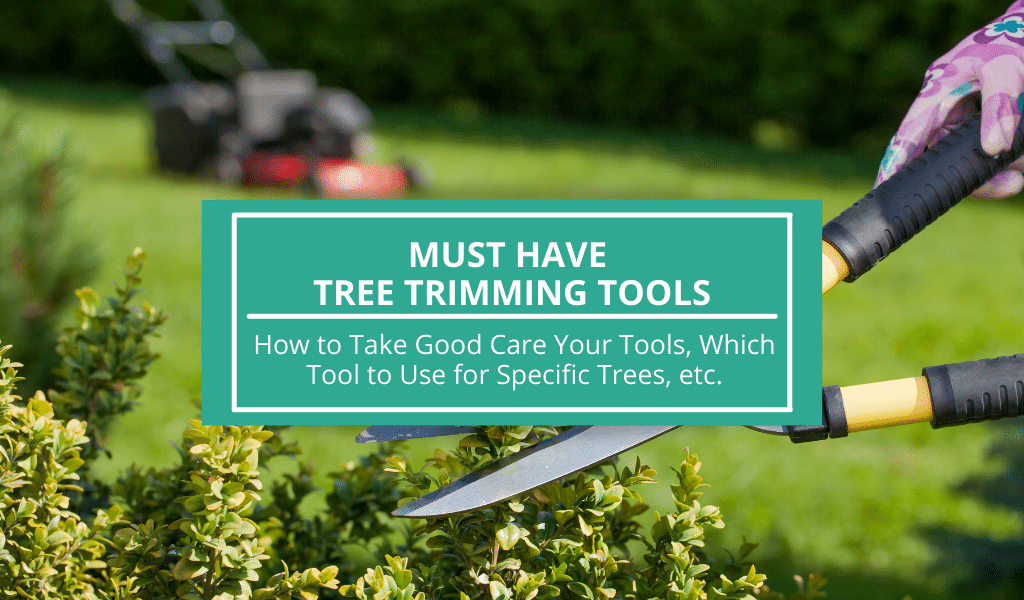Tree trimming is one regular maintenance activity you can do on your own. Even if you’re not the handiest person around, several homeowners choose to do the trim all by themselves.
By the way, we’re referring to basic, simple cuts here. Complicated trimming projects are better left in the hands of a professional.
So what’s the secret? How do homeowners handle tree trimming on their own? Well, they have the best tree trimming tools in their arsenal. If you’re wondering where to start, we’re here to list down all the pruning tools you need to own as soon as possible.
Keep in mind that it is ideal to have three or more of these tree trimming tools on hand should you need to do immediate or urgent touch-ups.
Must Have Tools
Pruning Shears
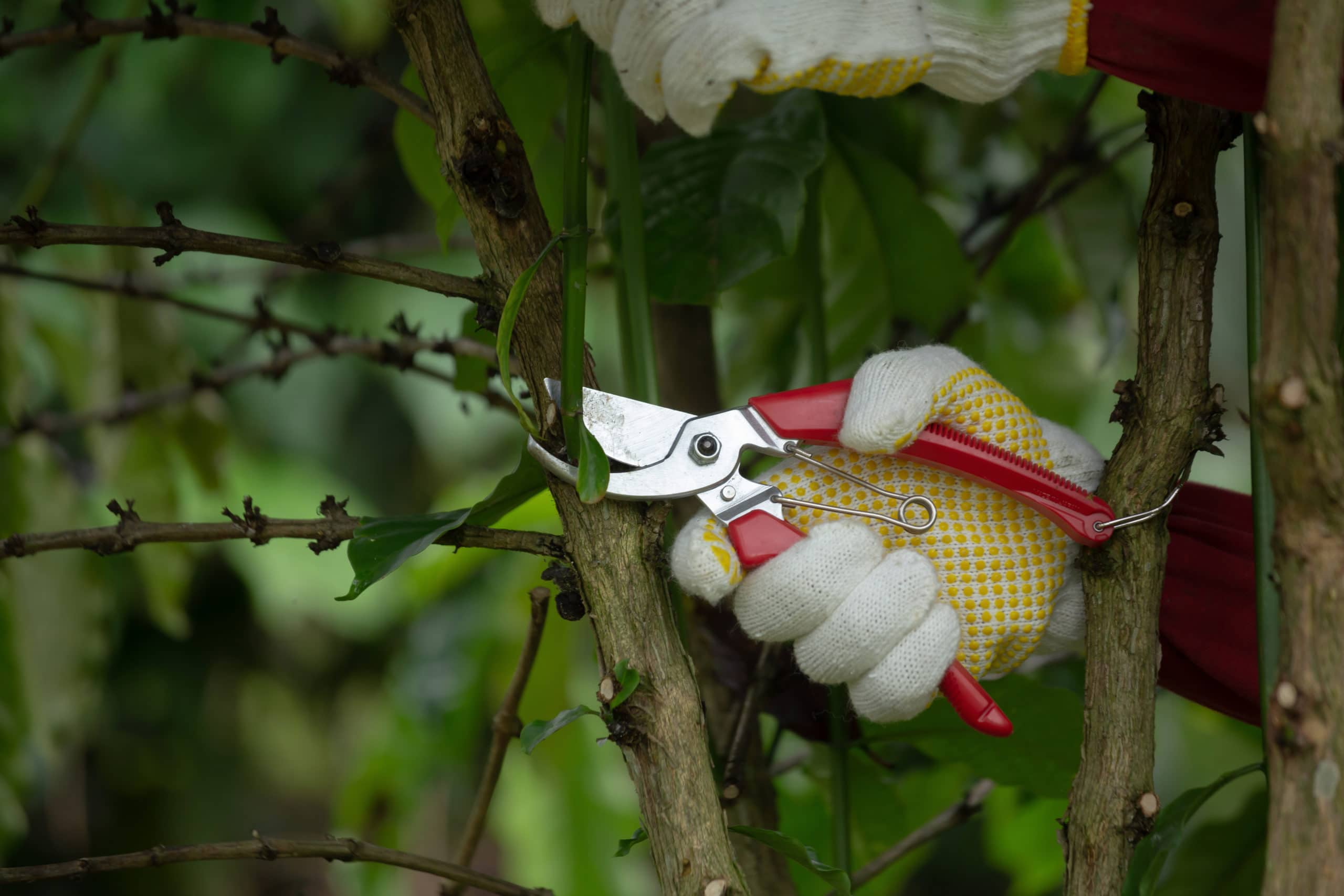
One of the primary pruning tools you’ll need is a pair of good pruning shears. These are also commonly known as hand pruners or simply pruners. They help create clean yet straightforward cuts on thin three twigs with a one-inch diameter.
Many homeowners consider this as an essential tool for tree trimming newbies. It resembles regular scissors, but they are better at cutting bushes, twigs, and small branches at odd angles.
For your reference, there are three standard pruning shears types: anvil, bypass, and ratchets.
Bypass
The bypass is considered the most popular choice of the three simply because of its ability to do one clean, straight cut. It helps a tree recover and heals the open wound faster. Not to mention, bypass shears are also ideal to use on growing stems.
Anvil
Meanwhile, anvil pruners use a straight blade that’s best used for stems and dry branches.
Ratchet
Ratchet pruners work similarly to anvil pruning shears, but they have a feature to cut in stages or make incremental cuts. If you do not want to land a wrist strain easily, consider this a must-have tree trimming tool.
Hedge Shears
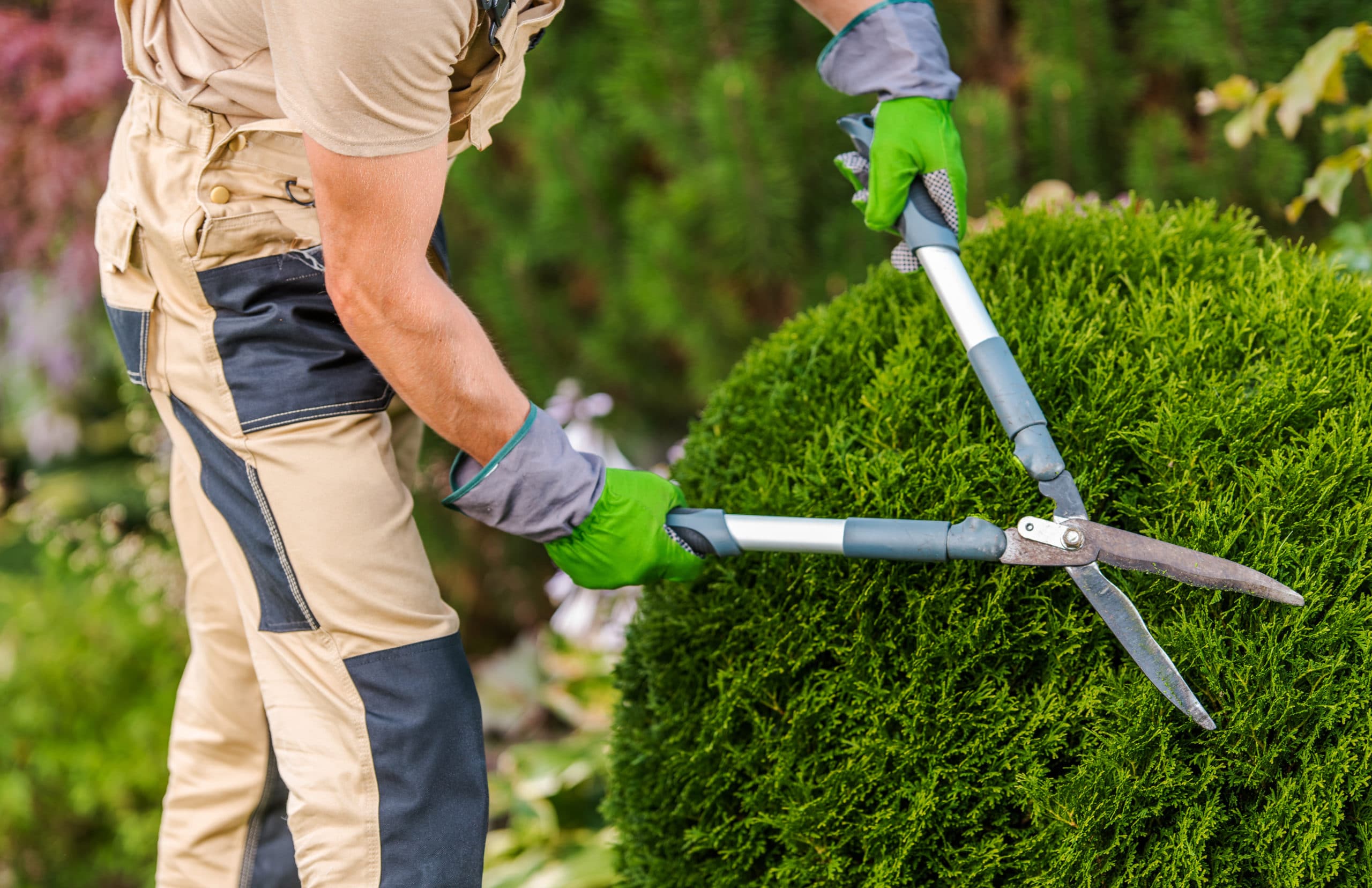
If you have plenty of evergreens, hedges, or small shrubs in your yard– consider adding top-quality hedge shears to your pruning tools. It works well on any hedge shrub, helping you make easy cuts on branches with a thickness of up to 2 inches.
Besides that, hedge shears are also efficient in trimming down any thick growth in your tree. If you’re looking for a budget-friendly option, consider manual hedge trimmers.
On the higher end of the scale, the motorized hedge trimmers optimize the entire trimming process through advanced technology. They work similar to finger bar mowers, with precautionary safety devices embedded to prevent any unwanted injury.
Loppers
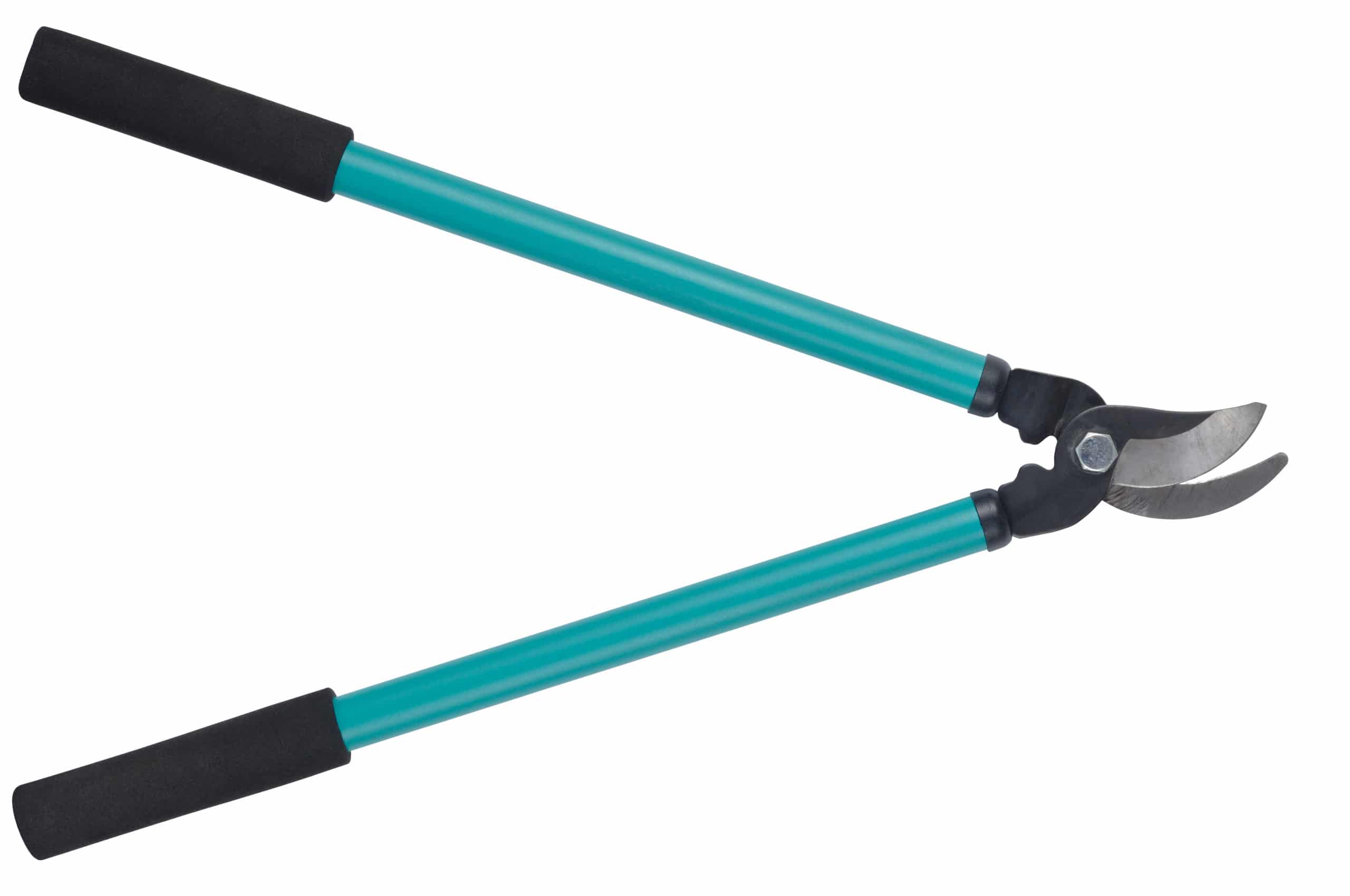
Shears alone won’t suffice for all of your tree trimming needs. Case in point: there will be several branches that are more than 2 inches thick.
When it comes to trimming medium-sized branches on flowering and fruit trees, purchase high-quality loppers as your following tree trimming tool. Similar to hand pruners, these are available in anvil or bypass types.
Just a word of caution– anvil type may harm live tree branches. To avoid unwanted damage, buy bypass loppers instead.
Loppers work similarly as pruning shears, only with longer blades and handles. These allow you to make clean cuts as much as three inches.
Pole Pruner
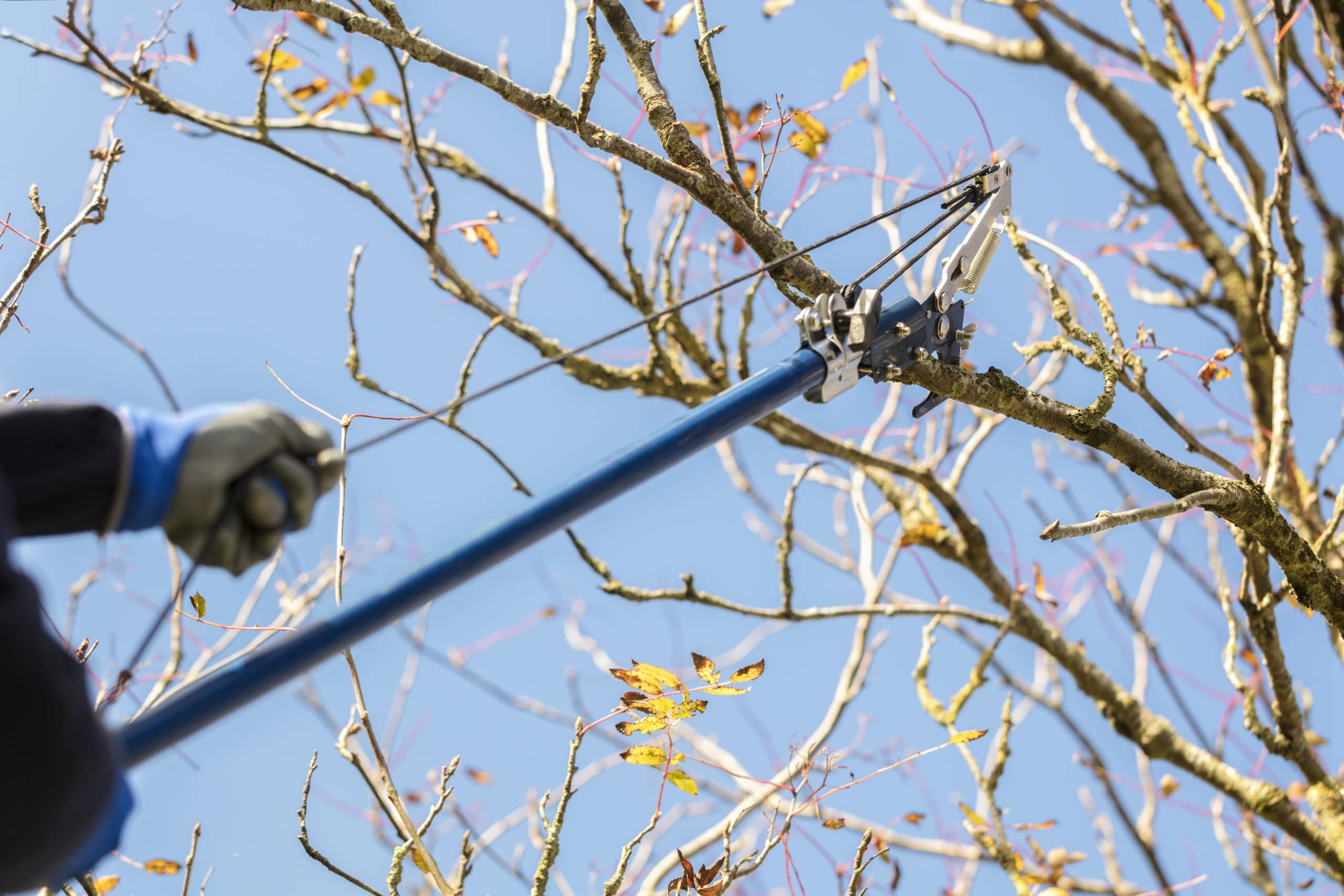
There will always be hard-to-reach branches that need to be taken care of. You can easily do this with the help of a pole pruner. This pruning tool generally extends up to 10 to 15 feet of extended reach.
On average, it measures only about eight feet long. However, some homeowners connect multiple pole pruners to reach greater heights– even up to 30 feet.
It takes away the need for a ladder in your tree trimming project. Accordingly, you may also consider electric pole pruners for a more efficient operation.
Pro tip: consider pole pruners with both a bypass blade as well as a pruning saw. It will help you handle thick branches (around 2 inches) and trim large limbs.
You will only have to pull the string once you want the pruners’ blades to cut the branch in one go. How efficient, right?
Hand Saw
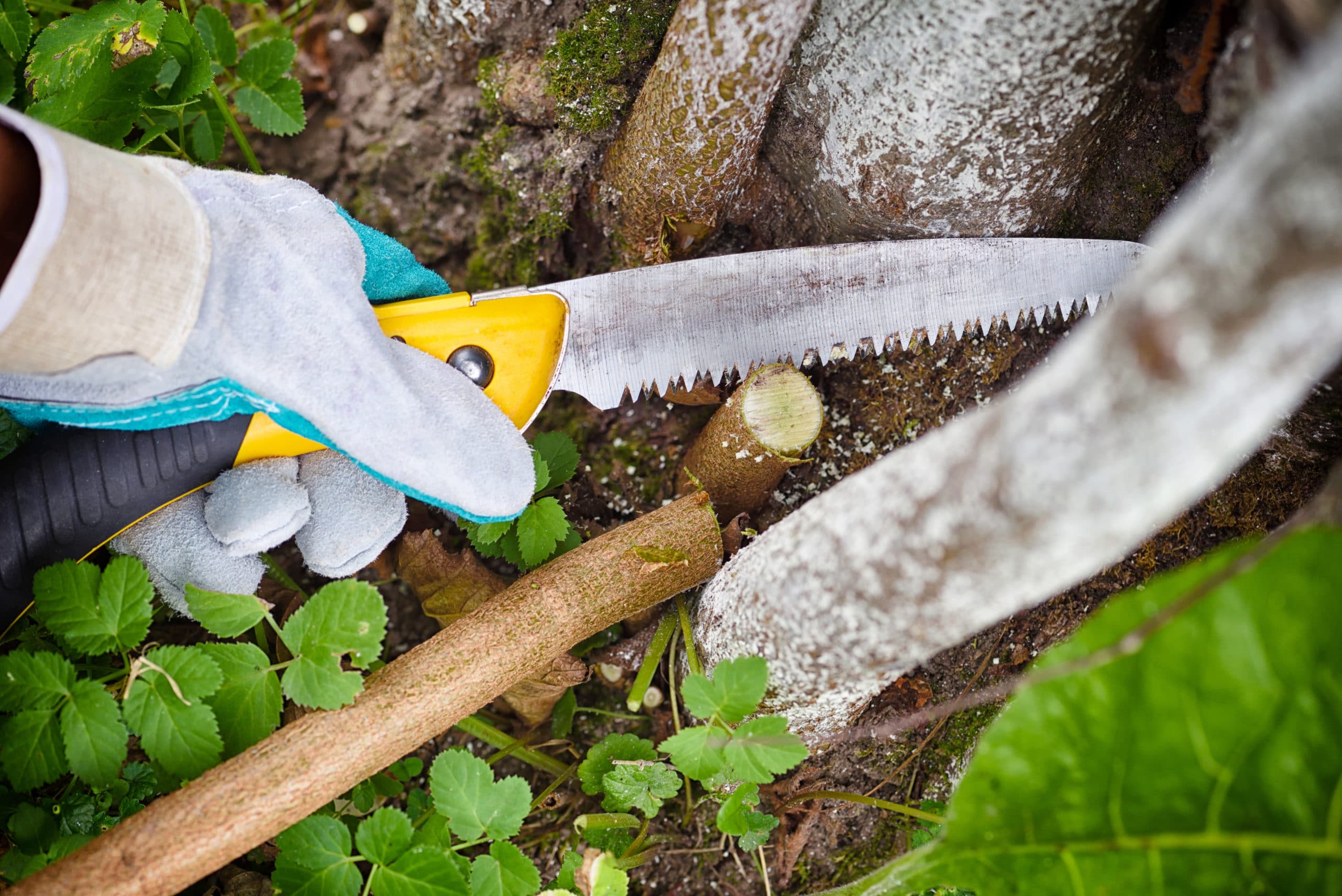
Hands with gloves of gardener doing maintenance work, pruning trees
When it comes to very thick, stubborn branches– you will need a hand saw to do the job efficiently. Keep in mind that shears and pruners have a thickness limitation in general.
Even if you force it to work, your small pruning tool may break, or you may only injure yourself in the process. In contrast, hand saws can help you cut branches up to five inches in thickness.
In particular, trees with large fronds such as palm trees need a hand saw to remove them effectively. So if you have one in your yard, it’s best to include a hand saw in your palm tree trimming tools.
You can easily cut on a push stroke or pull stroke (or both even). A push saw cuts as you push the saw away, whereas a pull saw works while pulling the saw towards you.
When using a handsaw while on a ladder or on the tree itself, a pull saw will be considerably safer as you’re not pushing yourself away from the tree.
Chainsaw
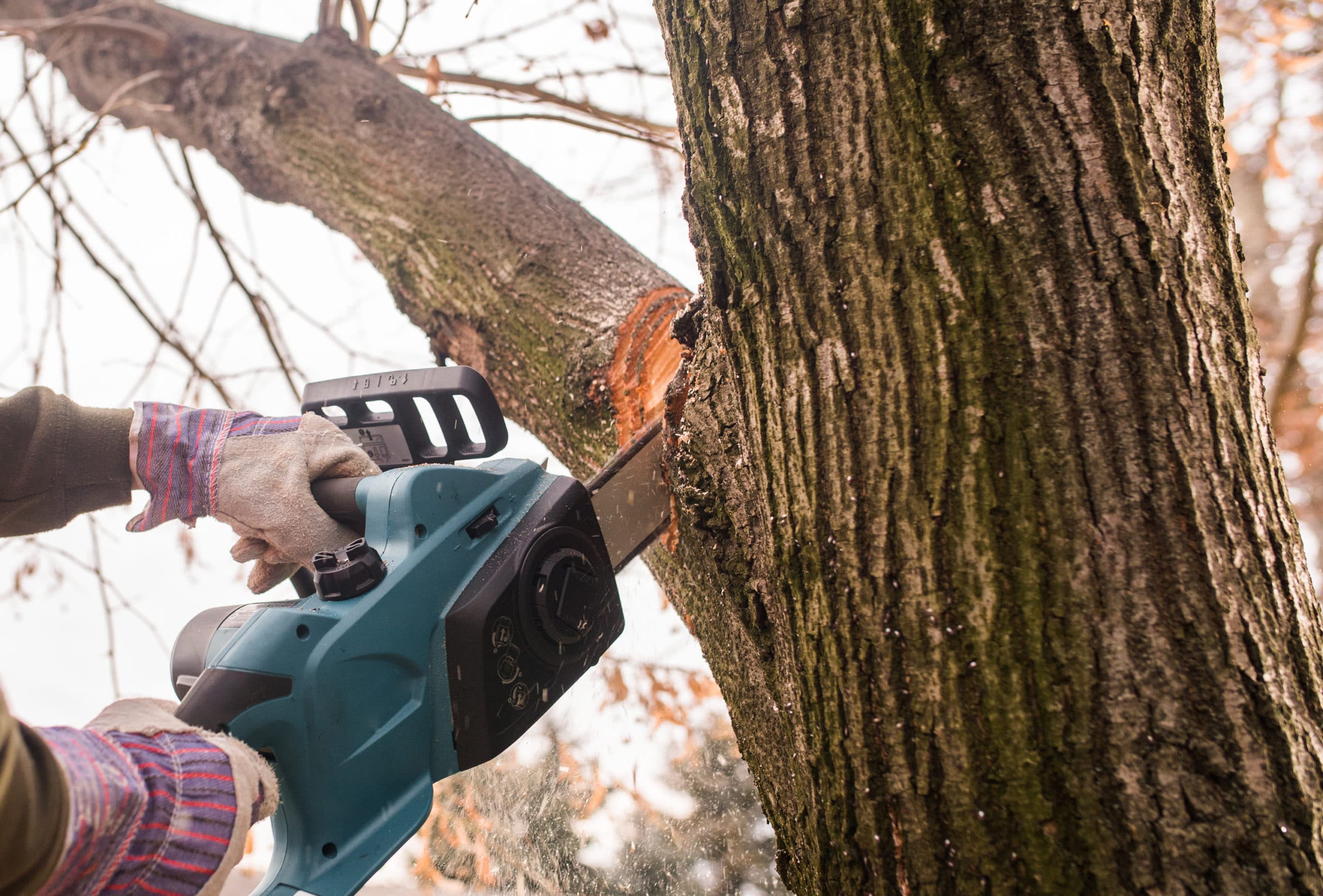
How do you deal with branches and large limbs that are beyond five inches in thickness? When hand saws prove insufficient for the job, it’s time to consider using a chainsaw.
This advanced tree trimming tool generally has its engine powered by gas. Accordingly, the cutting bar also holds the chain in place.
A standard chainsaw can cut through six inches up to as much as 20 inches. Several smaller units may also be electric-powered, which uses a battery or a power cord. Some perks you can enjoy in using electric chainsaws are the relatively quiet operation and lower vibration frequency.
Considered one of the best tree trimming tools for large-sized trees, it will make your project go smoothly without much tedious effort. Without being limited by a branch or limb size, you are free to cut thick pieces of wood as quickly as possible.
It’s always advised to go for large, gas-powered chainsaws. These can easily accommodate thick limbs and branches, which turn out to be a headache for you to manage in the long run.
You will need to be extra careful when using a chainsaw, though. To lessen the risk of danger or injury when using such a high-powered tool, best prepare personal safety equipment such as:
Trimming Tools by Tree Type
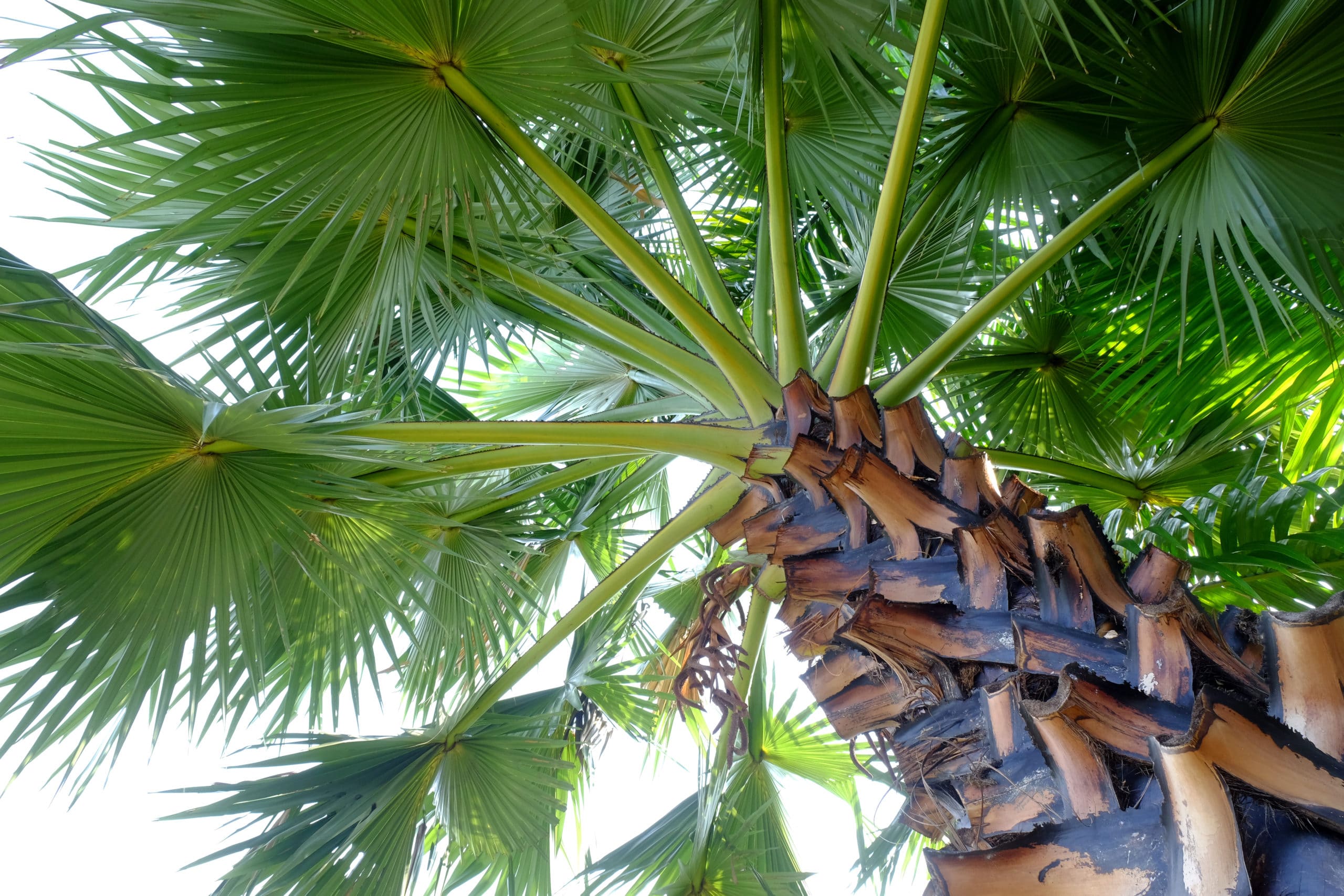
Let’s say you have a palm tree in your yard that needs to be trimmed as soon as possible. What necessary tools do you need to have to conduct a successful trim?
Standard tools such as hand pruners, machetes, or an ax may help you with this. Advanced machines such as motorized or manual pole saws may also make tree trimming much more manageable. On average, this pruning tool measures 9 feet in length.
If your palm tree is considerably tall, you may also need some climbing gear such as ladders or step stools.
Note that the trimming tools you need depend on the size of your tree and its particular type. Although, we strongly advise including the primary ones we’ve listed above in your tool kit.
You can always make use of these pruning tools for small or large-sized trees! Other than that, these tools are also used on evergreens, hedges, or small shrubs.
Taking Good Care of Your Trimming Tools
Once you have the best pruning tools in your arsenal, you will need to follow proper care and maintenance so you can use them in their peak condition for a long time.
Your top priority must be keeping them clean. If you use the same set of tree trimming tools for several trees without wiping them clean after every use, the tree sap may spread disease from one tree to another. Not to mention, it will be messy to use as it tends to gum the tools.
It’s best to get a designated towel to wipe your pruning tools clean now and then. You may also wipe the blade clean with alcohol just to ensure there will be no contamination between trees.
For tools with blades, it’s ideal to have them sharpened regularly. You wouldn’t want to use a dull blade when trimming your tree– it may only inflict damage and make the process longer than it has to be.
Summary
The good news is, you are not required to pay for professional services when dealing with a minor tree trim– such as cutting off dead, messy, and overlapping lower branches.
With the help of the tree trimming tools listed above, you may prune any tree on your property (regardless of size and type). When done correctly, you may help your tree grow properly and improve its current condition without spending a lot of money.
However, more advanced tree trimming projects should be left to a tree care professional near you. You can count on their expertise to do the job efficiently and swiftly. Note that these tasks may turn out to be dangerous for newbies– so you’ll be ensuring your safety in the process as well.

